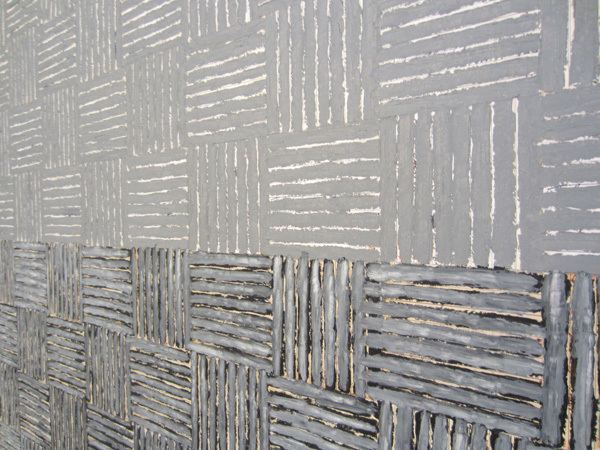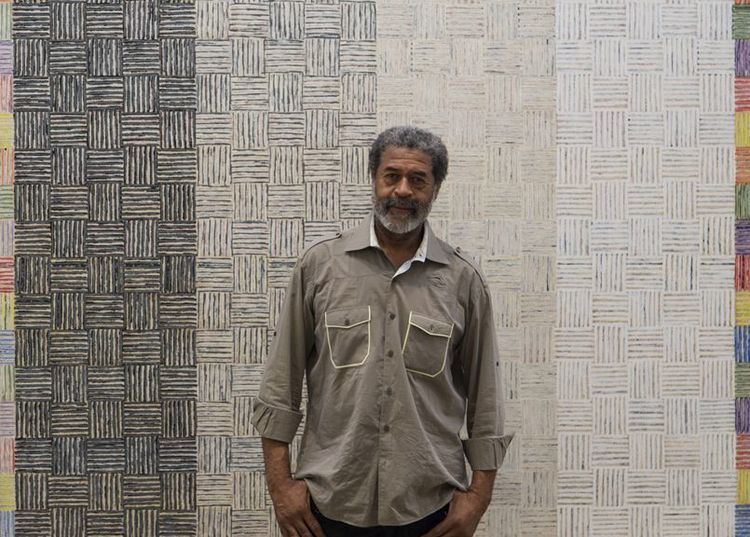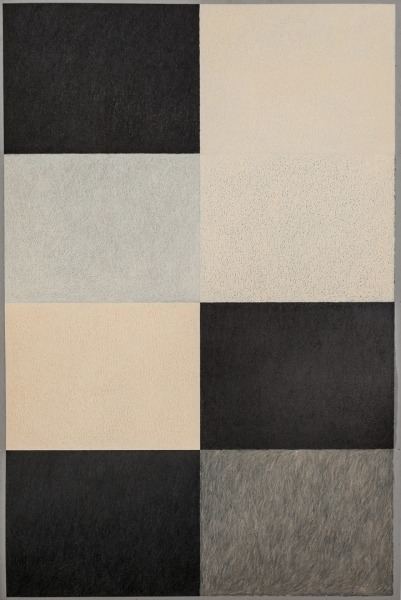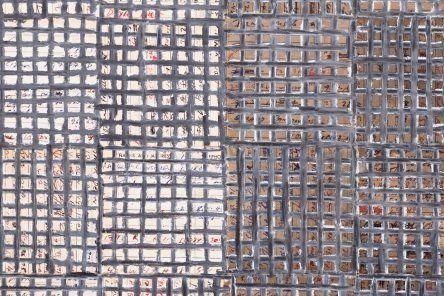Name McArthur Binion | ||
 | ||
Imovie mcarthur binion
McArthur Binion (born 1946) is an American artist based in Chicago, Illinois. Binion was born in Macon, Mississippi. He holds a BFA from Wayne State University (1971) in Detroit, Michigan and an MFA from Cranbrook Academy of Art in Bloomfield Hills, Michigan. He has been a Professor of Art at Columbia College in Chicago since 1992.
Contents
- Imovie mcarthur binion
- In conversation with mcarthur binion
- Early life
- Career
- Work
- Selected exhibitions
- References

In conversation with mcarthur binion
Early life

Binion was born in 1946 on a cotton farm in Macon, Mississippi. He began picking cotton at age 3 as one of 11 children, and by 1951 his family of 18 moved to Detroit where they found jobs in an auto plant. Binion was the first African American to get an MFA from Cranbrook Academy of Art. In 1973 he moved to New York, where he stayed until his move to Chicago in 1991.
Career

An active artist since the 1970s, Binion's work has been featured in group shows and the focus of solo shows at the Detroit Institute of Art, Michigan Council for the Arts, the Small Walls Gallery, the Peg Alston Gallery, Saginaw Museum of Art, Artist Space, and the Susan Caldwell Gallery. Binion's paintings have appeared in the Contemporary Arts Museum Houston, the Studio Museum in New York, and the Detroit Institute of Art. His solo exhibitions include most his 2015 show Re:Mine at Galerie Lelong in NYC, his 2014 & 2013 exhibitions DNA Study & Ghost:Rhythms at Kavi Gupta in Chicago, his 2012 show Perspectives 177: McArthur Binion at the Contemporary Art Museum, Houston and his 2010 exhibition Color Exploration: Simplicity in the Art of McArthur Binion at the University of Maryland University College Gallery.
Work
McArthur Binion's work primarily consists of minimalist abstract paintings, created using crayons, oil stick, and ink, often on rigid surfaces such as wood or aluminum. For many years, Binion has been incorporating laser-prints as a collaged ground on top of which he applies other mediums. Binion says that what he takes away from minimalism in his creative process is “that you want to do your own stuff in your own image.” His work has been compared to Dorothea Rockburne, Robert Mangold, Robert Ryman and Jasper Johns’s “The Dutch Wives” paintings at times.

Binion identifies as a "Rural Modernist," and says that his work "begins at the crossroads—at the intersection of Bebop improvisation and Abstract Expressionism.” His work is influenced by modernist artists such as Kasimir Severinovich Malevich, Piet Mondrian, and Wifredo Lam. He is considered "expressionistic, grided abstract paintings have garnered significant (albeit long-overdue) attention."

In his most recent exhibition (the DNA Study series), Binion’s paintings aren’t fully abstract, but attempt to talk about the black experience and his personal history at the same time. Acting as a kind of template for gridded marks in black, white and occasionally brightly colored oil-paint-stick layered on top, are pages from Binion’s 1970's handwritten phone books, passport ID and negatives of his birth certificate. To fully experience this artist's work, the viewer/participant must get close to the piece of art. Underneath the horizontal and vertical lines of various hues a story is being told. Binion painstakingly combines his personal story with abstract shapes and patterns which are interesting to view as they draw you into the story of the artist.
Ghost: Rhythms, a 2013 of early work at Kavi Gupta Gallery, shows the influence of action painting, Abstract Expressionism and Minimalism. Binion pulls stylistic tropes common to folk artists as well, borrowing quilting patterns, layering photographic imagery and motifs and grids. He does all this while using one implement: his characteristic "crayon," or paint stick, which allowed him to move past oil paint. "In 1972 when I started to use them, they were basically industrial marking sticks," he recalls. Binion effectively converts an elementary tool into a refined hand-held instrument. He thrives in the effort of that conversion, having developed an ornate and labored approach that demands strenuous hours, and—as Binion has noted—resonates with the cotton-picking of his childhood. He had to train himself to be ambidextrous to negotiate hand fatigue, and works an entire surface of a painting in one sitting, before returning to rework that surface the next day or week or month. Some works take years to complete. Depending on how long he lets the paint dry, it becomes more or less malleable, responding to his hand like pigmented, sculptural putty. What results is a mash-up of pointillism.
“The part I took from Minimalism is that you want to do your own stuff in your own image,” Binion says in the release for this show, and this is what he always did, as one can see in the exhaustive yet delicate marks of Icecicle: Juice from 1976, which emanate an uncanny shimmer.
Small works like MAB: 1971: VIII, 2015, almost naively ram a puzzle of Binion’s portrait ID photos (the kind we all know and don’t necessarily love) directly up against the artist’s overlaid lines of oil bar, but the outcome is phenomenal. Binion’s work isn’t specifically race-related, but the pictures of the artist in his youth (with rounded afro) take stock of unaccounted for signifiers that collapse into his own particular story.
Larger works like DNA: Black Painting: Ph Bk / B Cert: II, 2015 also sideswipe racial connotation with color as racial terminology, while also ratcheting up the artist’s litany of Op art effects, ranging from Ryman’s sly use of chromatic underpainting to Jasper Johns’ shifting avalanche of cross-hatch marks.
Like many successful artists that fit the modernist profile, Binion makes work that is a study in oppositions: line and shape, figure and ground, image and abstraction, copy and original, color and black & white. His modus operandi is to somehow magically blend an assault of binaries into a single, unified emblem of the unique and complicated self.
Selected exhibitions
McArthur Binion's work has been featured in exhibitions at numerous galleries and institutions including the following solo exhibitions:
